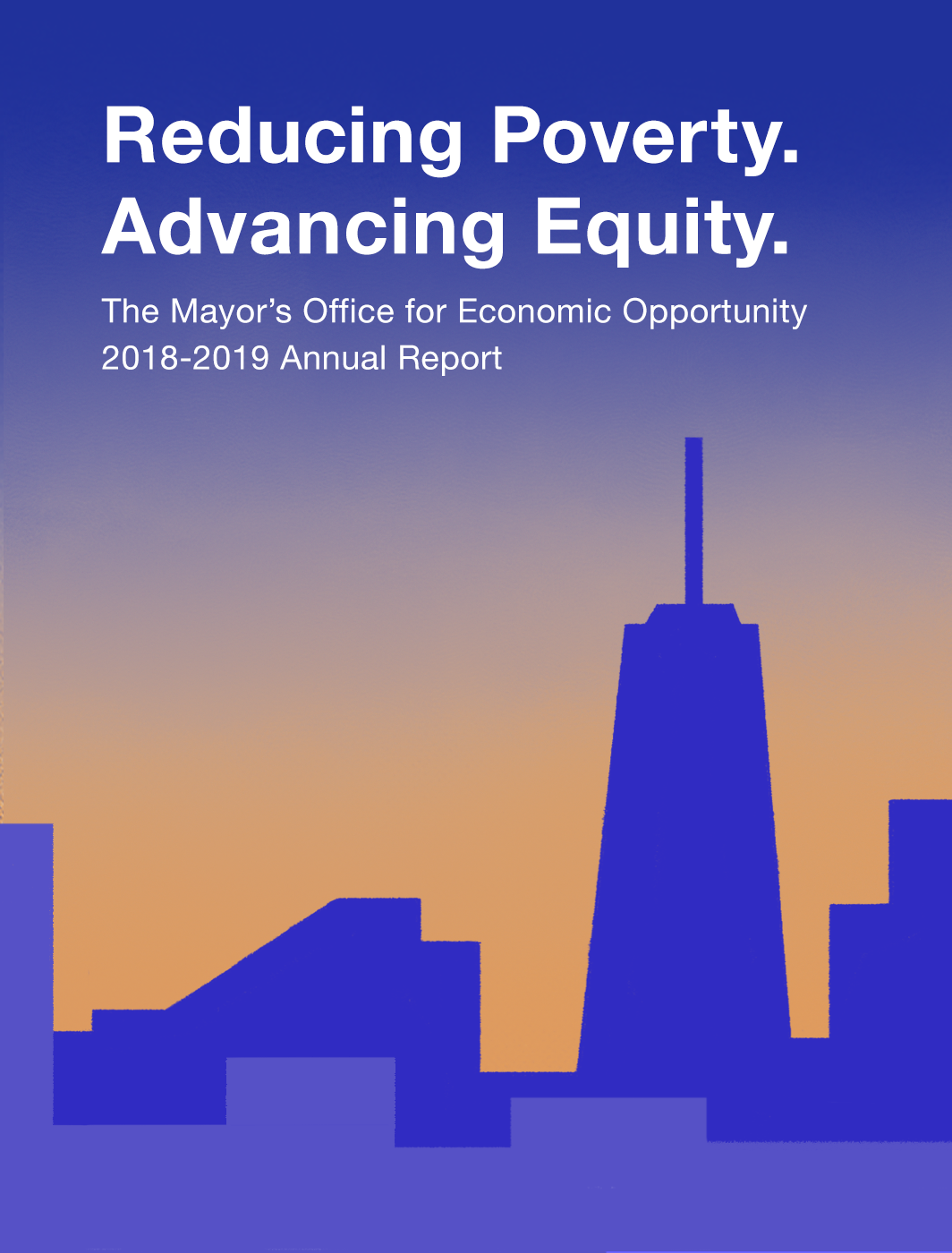
 The Mayor's Office for Economic Opportunity311
The Mayor's Office for Economic Opportunity311 Search all NYC.gov websites
Search all NYC.gov websites
Annual Reports
In past years, our office produced annual reports that summarized our work. Those reports are below.
We now provide this information on a regular basis in the form of Milestones.

Reducing Poverty and Advancing Equity: A Retrospective of 2014 - 2021
The Mayor's Office for Economic Opportunity (NYC Opportunity) helps New York City apply evidence and innovation to reduce poverty and increase equity. We work to improve the systems of government by advancing the use of research, data and design in program and policy development, service delivery and budget decisions. What does that look like in practice? As our body of work over the eight years of the de Blasio Administration reflects, our multidisciplinary team works across City government, partnering with agencies to initiate new approaches and enhance existing practices.
Read NYC Opportunity's Retrospective

NYC Opportunity 2018-2019 Annual Report
In this year's digital report NYC Opportunity highlights just some of the initiatives that reflect the broad work of our office. In addition to being important in their own right, these nine projects illustrate the different ways that we put our principles into action: investing in programs that work to allocate resources for better results; improving service delivery to be more coordinated and effective; and better understanding and developing solutions to poverty, equity, and economic mobility.
Read the NYC Opportunity 2018-2019 Annual Report


